Bendigo Field Naturalists Club - nest box project
For over 30 years (c. 1986-20024) the Bendigo Field Naturalists Club has been placing and maintaining nest boxes throughout the bushland parks and reserves surrounding the City of Greater Bendigo. Nest boxes that target the Brush-tailed Phascogale have been installed to restore hollow availability in forest areas where past disturbance has caused coppice regrowth of small multi-stemmed trees that lack natural hollows. Boxes have been maintained and monitored by the club over this period.
Nest box design, installation & management
2015-2016 Nest Box Survey
In 2015-2016 the Bendigo FNC undertook an audit of nest boxes placed in the forest since the 1990s (Figure 1).
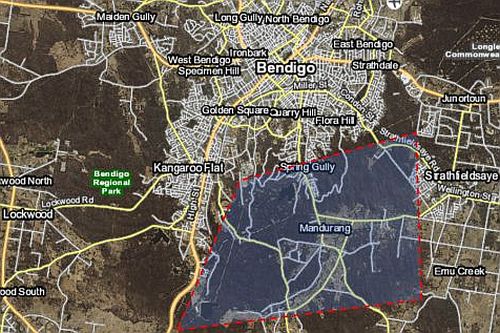
The audit and survey was undertaken to better understand the relevance of nest boxes for phascogale conservation in local forests and more generally their use by other hollow dependent species.
The audit aimed to establish how many of the previously installed nest boxes were still in place, their physical condition and repair needs, evidence of use by different species, and to collect baseline data to assist in future management and best practice decisions for land managers and stakeholders.
Key points from the decades long nest box study
The study was conducted in sections of the Greater Bendigo National Park (One Tree Hill and Mandurang Blocks) and Bendigo Regional Park (Diamond Hill/Kangaroo
Gully Sections), which are located south of Bendigo, Victoria. The study involved looking at the functionality of 303 nest boxes installed over 10–25 years. The nest boxes were spread across an area of approximately 4000 ha.
A key fining from this study was that nest boxes could be used to support populations of the Brush-tailed Phascogale over many decades.
- 60% of nest boxes remained functional to support the Brush-tailed Phascogale, and the Sugar Glider after almost 20 years.
- Years installed, method of nest box attachment and tree species influenced whether boxes remained functional.
- Hanging boxes on a large nail was much more likely to be associated with functional nest boxes compared to boxes nailed through a backing board.
- In the Bendigo area attaching boxes to Red Ironbark trees had a much greater likelihood of remaining functional compared with Yellow Box.
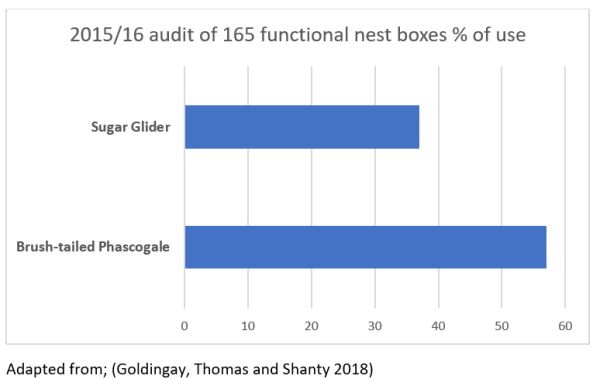
Research Report
Outcomes of decades long installation of nest boxes for arboreal mammals in southern Australia. By Ross L. Goldingay, Karen J. Thomas and Devi Shanty. pdf ECOLOGICAL MANAGEMENT & RESTORATION VOL 19 NO 3 JULY 2018 doi: 10.1111/emr.12332
Nest Box Program 2017
The Bendigo Field Naturalists Club nest box management area currently covers approximately 1800 ha in the southern sections of the Greater Bendigo Regional Park and Greater Bendigo National Park (Fig 1). There are a total of 290 functioning artificial hollows in the club’s program with another 100 to be installed during 2018. The new boxes have been funded by the City of Greater Bendigo and will be constructed by Community Services. These will be installed in collaboration with Parks Vic and DELWP.
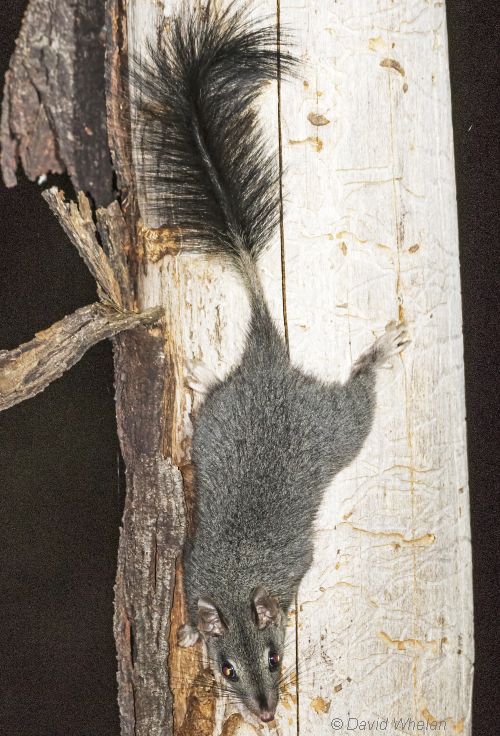
October 2017 Survey: Greater Bendigo Regional Park
The Bendigo FNC has closely monitored nest boxes in a 600 ha section of the Greater Bendigo Regional Park since the mid-nineties. Consistent evidence of female nesting activity has been recorded in this area.
In October 2017, 140 nest boxes were inspected (Fig 3). Of these 38 active nests with fresh scats and nesting material of feathers, stringy bark and wool were found with nine boxes being occupied by groups of juvenile phascogales. These results and long term monitoring demonstrate the area’s significance for phascogale conservation.
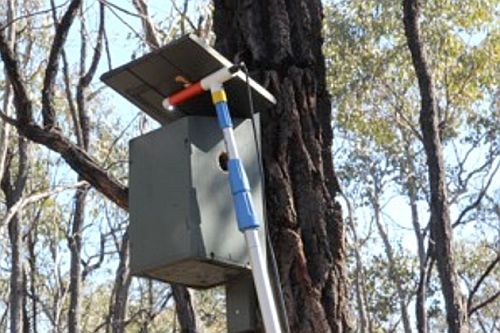
2021 surveys
A network of 500 nestboxes, targeting the Brush-tailed Phascogale are in place throughout an area of approximately 60 square kilometres of National and Regional parks of the Greater Bendigo Region. The biannual survey continues into its 5th year with planned surveys in May and October 2021.
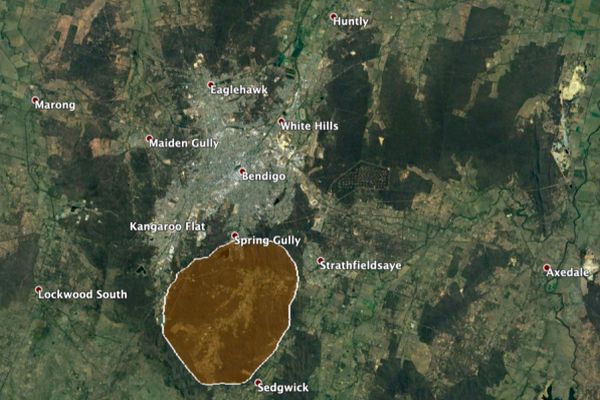
Nest box design, installation and management
Box volumes currently in use range from 8 to 16 litres. Entrance holes are placed on the side of the box nearest to trunk so the animal is less exposed to predators when entering or leaving.
Boxes are hung from a 6-inch nail placed into the tree on a 45-degree angle. Larger diameter trees are selected when available so that the box receives greater thermal buffering from extremes of temperatures experienced in the Bendigo region. Protection from overhead canopy and shading from adjacent trees is carefully considered to provide maximum protection from solar radiation in summer. Best practice tip: install boxes at the time of day when this can be most directly assessed.
Height for placement on trees is between 3-4 metres for practicality. For best phascogale box placement a tree is selected that has branches or canopy that interconnect with adjacent trees. This allows phascogales to jump across when dispersing so the animal can avoid travelling on the ground in areas immediately surrounding the base of the tree with the box.
Where possible, at least two boxes are installed at each location. The distance between boxes is no more than 5m. This provides adequate boxes for phascogales and sugar gliders otherwise gliders may prevent phascogales from using a box where only one is available. Best case scenario would be to place a cluster of four boxes enabling both winter and summer shelter that caters for changing sun angles/direction during winter and summer seasons and the extremes of seasonal temperature experienced in Bendigo. Recent research indicates clusters of 3 or more nest boxes per site are required to suit the habitat requirements of female phascogales (Goldingay et al. 2024).
It is important to note that although nest boxes play an valuable role in providing shelter in areas where forests have been modified they are not as good as real tree hollows which provide superior thermal protection from heat and cold. A study by (Rowland et al. 2017) found nest-box temperatures were strongly influenced by ambient temperatures and solar radiation whereas tree hollows buffered external temperature fluctuations.
Research into the thermal properties of nest boxes was carried out to determine temperature profiles in extreme temperatures >40C, <0C using various types of nest box materials and designs i.e. PVC pipe, foamed PVC boxes, wooden/ply boxes, natural log hollows. Results found that although nest boxes have poor insulative properties compared with natural hollows the high temperatures in nest boxes did not result in mortalities but could potentially cause heat stress in summer. It is recommended that nest boxes be designed to minimise summer heating. Full report: Tolerance to high temperature by arboreal mammals using nest boxes in southern Australia. Ross L. Goldingay, Karen J. Thomas. Journal of Thermal Biology, Vol. 98 May 2021.
Current Trials:
- A study into the thermal conditions in nestboxes at temperatures below 5C has been completed and in process of writing.
- To make boxes less attractive to bees the addition of raw wool as a starter nesting material is being tested. This will reduce the internal volume of boxes, which has been identified as a potential factor limiting bee survival after invasion of boxes. By limiting the available space it is hoped that bees will avoid selecting boxes as new hive sites. Wool also has excellent insulation properties and will not compact, so may also address the issue of boxes becoming unsuitable when overfilled with old compacted nesting material.
- Investigation of materials with higher resistance to chewing and weathering is currently being trialled using a protective covering of bitumised metal damp coursing placed over the outside of box lids and hardwood templates over chewed entrances.
- A study started in 2019 into the use of natural hollows by the phascogale and glider (Kreffts) continues . A number of trees with hollows used by the phascogale and glider have been identified and presently being monitored using sensor cameras.
-
Temperature variation in nest boxes occupied by arboreal mammals during winter in southern Australia – results from this research were published in May 2022. It was found that temperatures in the nest decreased or increased rapidly as animals vacated or re-occupied their nests. Phascogales returned repeatedly to the nest during the night, resulting in an average 15°C differential above ambient over the night.
-
A study into the habitat preferences of phascogales during maternal and non-maternal periods in box-ironbark forest was completed in 2024. The study found that female Brush-tailed Phascogales were positively influenced by the number of nest boxes present at a site along with the number of large Red Ironbark trees greater than 30 cm. The study also found that to optimise management for phascogales nest box programs need to focus on areas where large ironbark trees are abundant and to install clusters of 3 or more nest boxes per site (Goldingay et al. 2024).
Research findings
- Outcomes of decades long installation of nest boxes for arboreal mammals in southern Australia. By Ross L. Goldingay, Karen J. Thomas and Devi Shanty. pdf ECOLOGICAL MANAGEMENT & RESTORATION VOL 19 NO 3 JULY 2018 doi: 10.1111/emr.12332
- Comparing the thermal suitability of nest-boxes and tree-hollows for the conservation-management of arboreal marsupials. Rowland, Jessica & Briscoe, Natalie & A. Handasyde, Kathrine. (2017). Biological Conservation. 209. 341-348. 10.1016/j.biocon.2017.02.006. Abstract on ResearchGate.
- Tolerance to high temperature by arboreal mammals using nest boxes in southern Australia. Ross L. Goldingay, Karen J. Thomas. Journal of Thermal Biology, Vol. 98 May 2021.
- Temperature variation in nest boxes occupied by arboreal mammals during winter in southern Australia. By Ross L. Goldingay and Karen J. Thomas, Australian Mammalogy CSIRO Publishing 25 May 2022, https://doi.org/10.1071/AM21049
- Habitat preferences of arboreal mammals in box-ironbark forest during maternal and non-maternal periods Ross L. Goldingay A, Darren G. Quin A and Karen J. Thomas B. Australian Mammalogy 46, 2024, CSIRO Publishing https://www.publish.csiro.au/am/AM24010
See also:
- Maurice Lewis talk to SWIFFT 2012 pdf.
- Bendigo Field Naturalists Club
- Brush-tailed Phascogale project - Friends of Brisbane Ranges
- Learn more about the Brush-tailed Phascogale.


